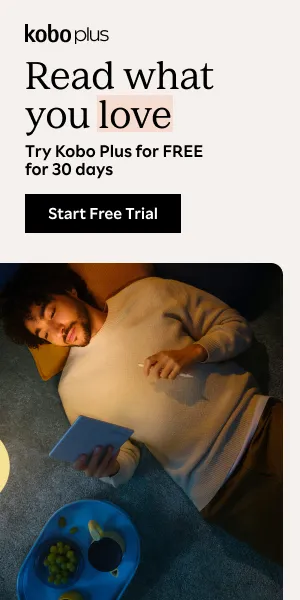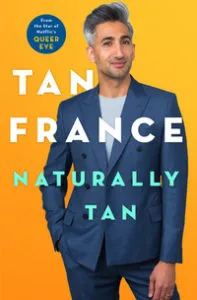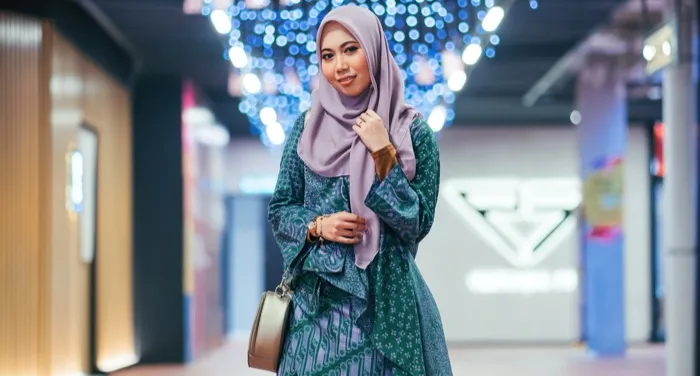
Reading About Modest Fashion
This content contains affiliate links. When you buy through these links, we may earn an affiliate commission.
I’m pretty much the last person anyone would ask about fashion, modest or otherwise. That’s not a dig on my clothing choices, although they are usually unimpressive. Rather it is just a fact that I have never been very interested in fashion.
 Which is why it’s funny that I am so excited to read Hafsa Lodi’s book Modesty: A Fashion Paradox. Although the photographs in it are striking, it’s not the styling or clothing I’m interested in. Instead it is the way fashion intersects with definitions of “modesty” (whatever that means) and “modest fashion.”
Lodi studied journalism and has written about fashion (among other topics) for numerous publications including The National and Vogue India. She is thoughtful and reflective in her writing, something a topic like this strongly requires. It would be easy to fall into simple dichotomies of covering one’s body is good or bad. However, Lodi avoids this in her shorter pieces. I expect nothing less of her in her book.
Her profile of influencer Leah Vernon and her memoir Unashamed: Musings of a Fat, Black Muslim is a good example. Vernon had to face a number of obstacles, particularly related to her size, when searching for self-acceptance. Lodi handles Vernon’s body image issues and her other concerns with sensitivity. Reading her profile made me more interested in Vernon’s book and this is of course the desired outcome. However, in the hands of a less thoughtful writer, it may not always be the result.
Which is why it’s funny that I am so excited to read Hafsa Lodi’s book Modesty: A Fashion Paradox. Although the photographs in it are striking, it’s not the styling or clothing I’m interested in. Instead it is the way fashion intersects with definitions of “modesty” (whatever that means) and “modest fashion.”
Lodi studied journalism and has written about fashion (among other topics) for numerous publications including The National and Vogue India. She is thoughtful and reflective in her writing, something a topic like this strongly requires. It would be easy to fall into simple dichotomies of covering one’s body is good or bad. However, Lodi avoids this in her shorter pieces. I expect nothing less of her in her book.
Her profile of influencer Leah Vernon and her memoir Unashamed: Musings of a Fat, Black Muslim is a good example. Vernon had to face a number of obstacles, particularly related to her size, when searching for self-acceptance. Lodi handles Vernon’s body image issues and her other concerns with sensitivity. Reading her profile made me more interested in Vernon’s book and this is of course the desired outcome. However, in the hands of a less thoughtful writer, it may not always be the result.
 Lodi’s profile of Zeba Talkhani and her memoir My Past is a Foreign Country is another good example. Talkhani is South Asian and Muslim, and grew up in Saudi Arabia in a conservative family. As she grew more conscious of her family’s narrow expectations, she found she was often at odds with her conservative family’s plans for her. Talkhani describes herself as an intersectional feminist, and Lodi is careful to present Talkhani’s memoir in a nuanced way, rather than just as another woman freeing herself from the oppression of her religion and family.
Lodi also has a master’s degree in Islamic law from the School of Oriental and African Studies in London. Obviously, her interest in Islam is also one that is long-standing. In her writing, Lodi brings together religious interpretation and clothing design to analyze this apparent trend of modest fashion. And this is important to me because I have never gravitated toward style considerations, but I am interested in how individuals can affect fashion to fit their own needs.
Lodi’s profile of Zeba Talkhani and her memoir My Past is a Foreign Country is another good example. Talkhani is South Asian and Muslim, and grew up in Saudi Arabia in a conservative family. As she grew more conscious of her family’s narrow expectations, she found she was often at odds with her conservative family’s plans for her. Talkhani describes herself as an intersectional feminist, and Lodi is careful to present Talkhani’s memoir in a nuanced way, rather than just as another woman freeing herself from the oppression of her religion and family.
Lodi also has a master’s degree in Islamic law from the School of Oriental and African Studies in London. Obviously, her interest in Islam is also one that is long-standing. In her writing, Lodi brings together religious interpretation and clothing design to analyze this apparent trend of modest fashion. And this is important to me because I have never gravitated toward style considerations, but I am interested in how individuals can affect fashion to fit their own needs.
While listening to Tan France’s memoir Naturally Tan recently, I skipped all the fashion tips and just listened to his story about growing up gay, Muslim, and brown in England. I love Netflix’s Queer Eye reboot, but mostly for the kind and thoughtful way the hosts help the nominees. There’s a lot of radical self-love on there—just like in Jonathan Van Ness’s memoir Over the Top, which I also enjoyed (although some parts were very tough to listen to so do heed his warning at the beginning). Queer Eye shows there’s hope for everyone to change in a way that is personally meaningful for them. Some of that involves concentrating on the nominees’ clothing naturally, but I usually don’t focus much on the fashion angle.
Apparently, France designed a women’s swimwear line because he saw an opportunity in creating flattering designs that were not very revealing, particularly for Mormon women. I found this fascinating. It made me literally sit up and pay more attention to this part of his memoir.
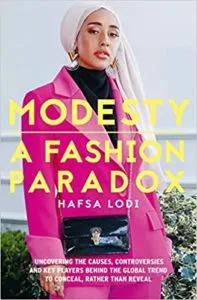 Which is why it’s funny that I am so excited to read Hafsa Lodi’s book Modesty: A Fashion Paradox. Although the photographs in it are striking, it’s not the styling or clothing I’m interested in. Instead it is the way fashion intersects with definitions of “modesty” (whatever that means) and “modest fashion.”
Lodi studied journalism and has written about fashion (among other topics) for numerous publications including The National and Vogue India. She is thoughtful and reflective in her writing, something a topic like this strongly requires. It would be easy to fall into simple dichotomies of covering one’s body is good or bad. However, Lodi avoids this in her shorter pieces. I expect nothing less of her in her book.
Her profile of influencer Leah Vernon and her memoir Unashamed: Musings of a Fat, Black Muslim is a good example. Vernon had to face a number of obstacles, particularly related to her size, when searching for self-acceptance. Lodi handles Vernon’s body image issues and her other concerns with sensitivity. Reading her profile made me more interested in Vernon’s book and this is of course the desired outcome. However, in the hands of a less thoughtful writer, it may not always be the result.
Which is why it’s funny that I am so excited to read Hafsa Lodi’s book Modesty: A Fashion Paradox. Although the photographs in it are striking, it’s not the styling or clothing I’m interested in. Instead it is the way fashion intersects with definitions of “modesty” (whatever that means) and “modest fashion.”
Lodi studied journalism and has written about fashion (among other topics) for numerous publications including The National and Vogue India. She is thoughtful and reflective in her writing, something a topic like this strongly requires. It would be easy to fall into simple dichotomies of covering one’s body is good or bad. However, Lodi avoids this in her shorter pieces. I expect nothing less of her in her book.
Her profile of influencer Leah Vernon and her memoir Unashamed: Musings of a Fat, Black Muslim is a good example. Vernon had to face a number of obstacles, particularly related to her size, when searching for self-acceptance. Lodi handles Vernon’s body image issues and her other concerns with sensitivity. Reading her profile made me more interested in Vernon’s book and this is of course the desired outcome. However, in the hands of a less thoughtful writer, it may not always be the result.
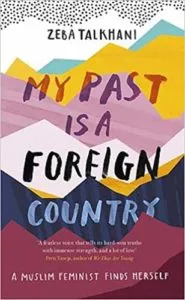 Lodi’s profile of Zeba Talkhani and her memoir My Past is a Foreign Country is another good example. Talkhani is South Asian and Muslim, and grew up in Saudi Arabia in a conservative family. As she grew more conscious of her family’s narrow expectations, she found she was often at odds with her conservative family’s plans for her. Talkhani describes herself as an intersectional feminist, and Lodi is careful to present Talkhani’s memoir in a nuanced way, rather than just as another woman freeing herself from the oppression of her religion and family.
Lodi also has a master’s degree in Islamic law from the School of Oriental and African Studies in London. Obviously, her interest in Islam is also one that is long-standing. In her writing, Lodi brings together religious interpretation and clothing design to analyze this apparent trend of modest fashion. And this is important to me because I have never gravitated toward style considerations, but I am interested in how individuals can affect fashion to fit their own needs.
Lodi’s profile of Zeba Talkhani and her memoir My Past is a Foreign Country is another good example. Talkhani is South Asian and Muslim, and grew up in Saudi Arabia in a conservative family. As she grew more conscious of her family’s narrow expectations, she found she was often at odds with her conservative family’s plans for her. Talkhani describes herself as an intersectional feminist, and Lodi is careful to present Talkhani’s memoir in a nuanced way, rather than just as another woman freeing herself from the oppression of her religion and family.
Lodi also has a master’s degree in Islamic law from the School of Oriental and African Studies in London. Obviously, her interest in Islam is also one that is long-standing. In her writing, Lodi brings together religious interpretation and clothing design to analyze this apparent trend of modest fashion. And this is important to me because I have never gravitated toward style considerations, but I am interested in how individuals can affect fashion to fit their own needs.

